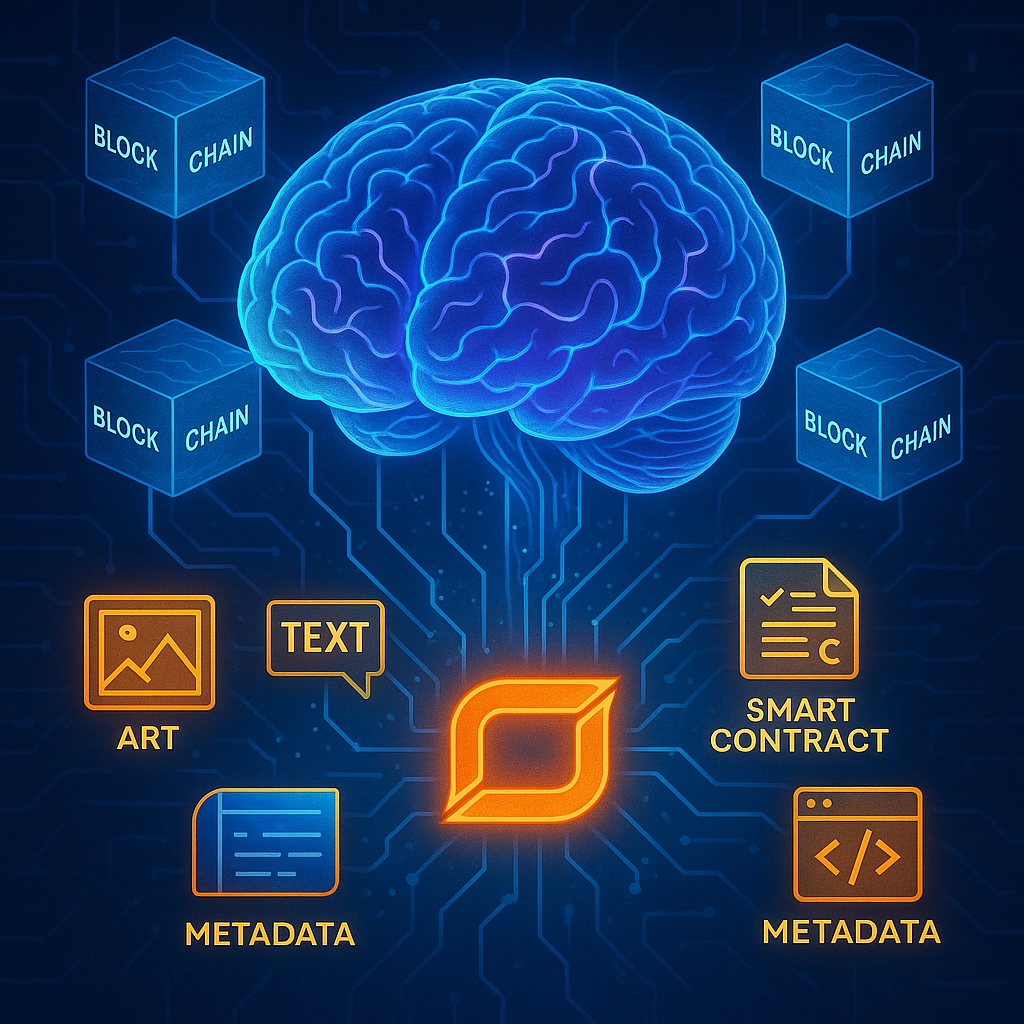Beyond Storage: How CromaChain Is Building a Memory Layer for the Internet

Beyond Storage: How CromaChain Is Building a Memory Layer for the Internet
The modern internet is fast, scalable, and accessible—but also forgetful. Content is routinely lost, delisted, or deleted as platforms evolve or disappear. In this volatile digital environment, few infrastructures are designed to preserve meaning, memory, and culture in the long term.
CromaChain positions itself not merely as another blockchain network, but as the “memory layer” of the decentralized internet. Unlike platforms optimized solely for financial transactions or rapid scalability, CromaChain focuses on permanence, cultural preservation, and identity continuity. It aims to serve as a ledger not only for assets but also for legacy.
The Problem of Internet Amnesia
While cloud storage and data servers offer short-term convenience, they remain centralized, mutable, and ultimately ephemeral. Websites vanish, art platforms pivot, and digital identities are reset overnight. This poses a foundational problem for the future of culture, history, and intellectual ownership.
CromaChain addresses this gap by offering a decentralized system for recording and protecting what it calls “cultural data.” This includes personal legacies, artistic work, governance records, and educational content—all of which can be stored immutably on-chain.
Architectural Design for Digital Permanence
CromaChain is built with long-term integrity as its design philosophy. Its infrastructure supports optimized block structures for archival reliability and metadata anchoring, ensuring that digital assets—such as NFTs, personal reputations, or cultural texts—can remain verifiable across time.
The ecosystem is driven by the $CRM token, which serves as both a utility mechanism and a filter. By requiring $CRM to interact with preservation tools, the network reduces noise and incentivizes high-quality contributions. Actions such as minting cultural assets, accessing AI tools, or linking metadata to legacy content are all connected to $CRM-based usage.
Complementing $CRM is $CMC, the governance layer that enables users and communities to shape the evolution of the network. This dual-token structure gives stakeholders a say in how the memory layer operates—whether in determining which archives are prioritized or how resources are allocated.
More Than Just NFTs
CromaChain’s application of NFTs diverges significantly from mainstream models. Instead of focusing on speculative art or entertainment collectibles, its NFT framework is designed for timestamping, provenance, and cultural registration. For example, artists on CromaArt.io can mint hand-painted digital works that include metadata tying the piece to historical figures, moments, or values. These NFTs serve less as tradable commodities and more as permanent artifacts.
Similarly, personal and community contributions—such as educational initiatives, DAO leadership, or public knowledge curation—can be recorded as soulbound tokens. These records provide reputational footprints and function as verifiable histories of individual and collective action on the network.
Access and Utility Through Tools
TrixWallet serves as the primary access point to the CromaChain memory layer. It allows users to manage stored assets, review historical records, and interact with preserved content. Its integration with CromaChain’s utility tools provides an intuitive interface for non-technical users to contribute, mint, and retrieve cultural data.
Developers can build on top of the chain using public APIs, enabling third-party platforms to create historical timelines, visual archives, or educational repositories that reference on-chain data. This transforms CromaChain from a passive storage medium into a living infrastructure for the internet’s most meaningful content.
A Distinct Role in Web3 Infrastructure
In a Web3 landscape dominated by finance-first platforms, CromaChain introduces a new category: memory-first infrastructure. It doesn’t attempt to replace Ethereum, Arweave, or IPFS, but rather complements them by focusing on the intentional preservation of identity, culture, and contribution.
Its positioning is particularly relevant for creators, educators, cultural institutions, and developers seeking to build digital legacies. In CromaChain’s vision, the decentralized internet is not just a tool for data and value transfer—it is also a vessel for collective memory.
Conclusion
The decentralized internet must not only be fast and permissionless—it must also remember. CromaChain addresses the often-overlooked need for cultural and historical permanence in the digital age. By enabling individuals and communities to record, verify, and protect their legacies on-chain, it offers a compelling answer to the internet’s growing problem of forgetfulness.
In doing so, CromaChain transitions the role of blockchain from a transactional layer to a memory layer—one that will allow future generations to understand not just how we built Web3, but why.
Comments (2)
Web3 Reader
June 16, 2025
Very informative article! I agree that Bitcoin ETFs are a game-changer.
Crypto Enthusiast
June 16, 2025
I wonder how regulations will affect adoption in developing countries.